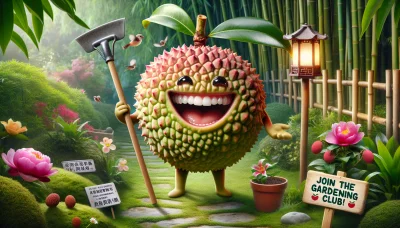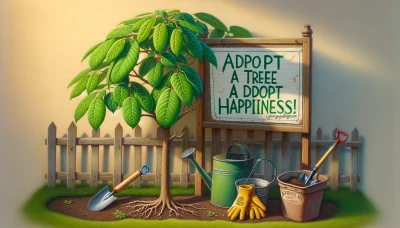Date trees Quiz
Test Your Knowledge
Question of
Introduction to Date Trees
Date trees, scientifically known as Phoenix dactylifera, are a species of palm tree known for producing the sweet fruit known as dates. They have a rich history that dates back thousands of years, originally native to the Middle East and North Africa. Date trees are highly valued not only for their delicious fruits but also for their cultural significance in many societies. In gardening, they add an exotic touch to landscapes and are cultivated for both their aesthetic appeal and their fruit. Growing date trees requires patience, as they can take several years to produce fruit, but their towering presence and the eventual harvest of dates make them a rewarding addition to any garden.
Types of Date Trees
- Medjool: Known for their large, sweet fruits.
- Barhi: Small, round dates with a thick flesh and rich flavor.
- Deglet Noor: Often referred to as the "queen of dates," known for their soft texture and subtle sweetness.
- Halawy: These are very sweet, small to medium-sized dates with a creamy texture.
- Khadravi: Known for their large size and delightful taste.
- Zahidi: Medium in size, they offer a firmer texture and a nutty flavor.
Cultivating Date Trees
Date trees, scientifically known as Phoenix dactylifera, thrive in hot, arid climates and require full sun exposure to produce fruit. They are well-suited to sandy, well-draining soils to prevent root rot from excessive moisture. While date trees are drought-tolerant, they do require regular, deep watering to establish a strong root system, especially in the hot summer months. Ensuring the right balance of conditions can lead to a bountiful harvest of dates.
Planting Your Date Tree
- Choose a suitable location in your garden that receives full sunlight and has well-draining soil.
- Ensure the spot you choose can accommodate the size of a fully grown date tree, keeping in mind that they can become quite large.
- Test the soil pH to make sure it is within the range of 6 to 7, which is ideal for date trees.
- Amend the soil with organic matter to improve its quality and drainage capabilities if necessary.
- Soak the date seeds for 24 to 48 hours in warm water to help speed up germination.
- Plant the soaked seeds in a small pot filled with a well-draining potting mix, placing them 1 inch deep into the soil.
- Keep the soil consistently moist but not waterlogged, and place the pot in a warm, sunny spot.
- Once the seedlings have grown to about 4-6 inches tall and have developed several leaves, they are ready to be transplanted outdoors.
- Dig a hole in your prepared spot that is twice the width and the same depth as the root ball of your seedling.
- Place the seedling in the hole and backfill with soil, gently tamping down around the base of the tree to remove air pockets.
- Water the newly planted tree thoroughly and apply a layer of mulch around the base to help retain moisture and regulate soil temperature.
- Continue to water your date tree regularly, especially during the hot summer months, to ensure it establishes a strong root system.
- Protect young trees from extreme weather conditions and pests by using tree guards and implementing appropriate pest control measures.
Caring for Your Date Tree
Ensuring the healthy growth of date trees requires consistent and proper maintenance. One of the key aspects of date tree care is pruning, which involves removing dead or diseased fronds and thinning out the canopy to allow sunlight and air to penetrate more effectively. This not only promotes healthier growth but also enhances fruit production. Fertilization is another critical component, with date trees benefiting from regular applications of nutrients to support their development and fruiting capabilities. Lastly, pest control cannot be overlooked, as pests can severely impact the health and yield of the tree. Implementing an integrated pest management strategy can help in identifying, preventing, and controlling pest infestations, ensuring your date tree remains healthy and productive.
Common Problems and Solutions
| Problem | Solution |
|---|---|
| Root Rot | Ensure proper drainage and avoid overwatering. |
| Leaf Spot | Apply appropriate fungicides and remove affected leaves. |
| Pests (e.g., spider mites, date palm weevil) | Use organic pesticides and introduce natural predators. |
| Yellowing Leaves | Check for nutrient deficiencies, particularly magnesium and manganese, and amend soil accordingly. |
| Slow Growth | Ensure the tree is getting enough sunlight, water, and nutrients. Consider soil amendments and proper fertilization. |
Harvesting and Using Dates
To harvest dates from your date trees, wait until they are fully ripe and have a deep brown color. The best time to harvest is usually in the late summer or early fall, depending on your climate. You can gently twist the dates off the bunch or use a pair of pruning shears to cut them. Once harvested, dates can be eaten fresh, or you can dry them for longer storage. Dates are incredibly versatile in cooking and baking. They can be used to sweeten smoothies, chopped up in oatmeal or salads, or used as a natural sweetener in baked goods like cakes and cookies. Dates also make a delicious and healthy base for homemade energy bars or balls, combined with nuts and seeds. Remember, dates are very sweet, so you may need to adjust the amount of other sweeteners in your recipes.












